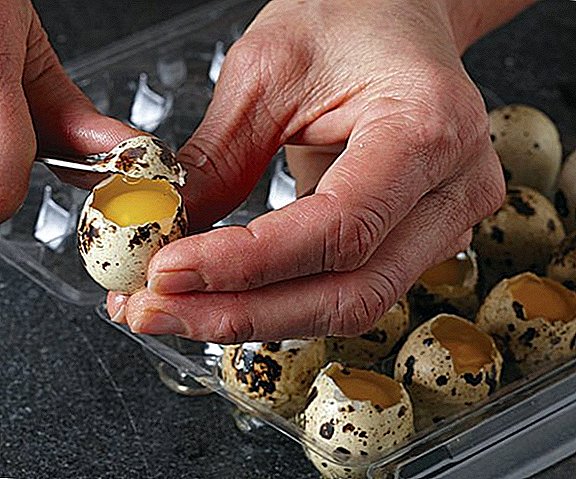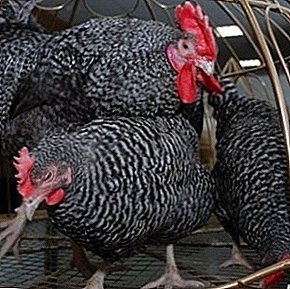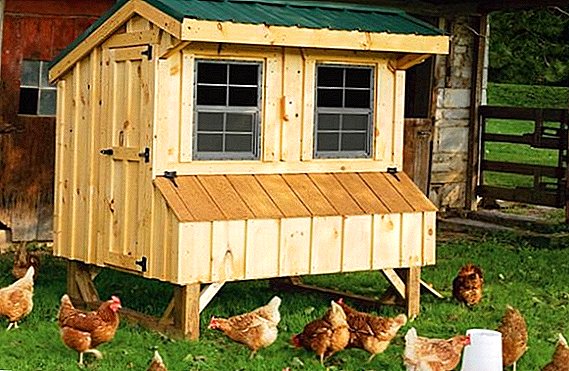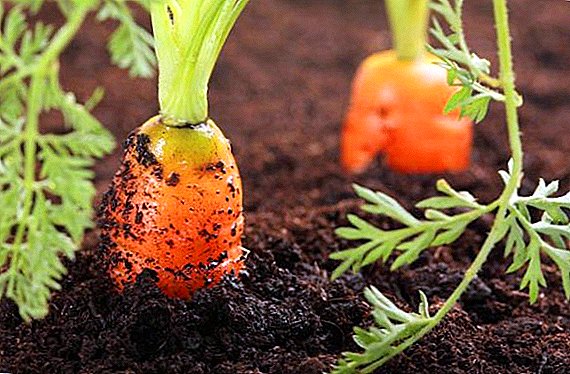 Carrots - a common, unpretentious and very useful culture, which is in the area of each gardener. However, planting and growing carrots has its own characteristics, given that you can significantly increase the quantity and quality of the crop.
Carrots - a common, unpretentious and very useful culture, which is in the area of each gardener. However, planting and growing carrots has its own characteristics, given that you can significantly increase the quantity and quality of the crop.
What affects the germination
To the sowing period did not bring unnecessary unrest, the gardener must carefully monitor the conditions of germination of seeds and carry out some agrotechnical measures. On germination directly affect:
- seed quality;
- ambient temperature and humidity;
- the quality of the soil taken for germination;
- sowing depth;
- watering.
Seed quality
With proper storage (in a cool and dry place), seeds remain viable for 2-3 years. But even if they were stored correctly, one should not expect that all the seeds will germinate. On average, their germination ranges from 45 to 70 percent. At the same time, it is necessary to take into account how quickly they sprout - for carrots this is about 10 days.
In addition to carrots, other root vegetables are successfully grown from seeds: turnips, parsnips, and beets.

Important! If you use the purchased seeds, it is better to take the products of famous manufacturers from trusted suppliers: unfortunately, quite often you may encounter unscrupulous sellers.
Type of soil for growing
Since young sprouts take most of the substances necessary for their growth from the land in which they are planted, certain requirements are imposed on it.
The soil should be:
- fertile - it is necessary to fertilize it with compost and ashes;
- friable and light enough that the sprouts could make their way through it, and the roots grew even and beautiful;
- have a neutral reaction (the root crop does not tolerate an acidic environment);
- not be toxic (for example, due to ultra-high doses of pesticides or fertilizers).
Important! If the soil is clayy and heavy - dig it with the addition of sand or rotted sawdust.
 If you use a purchased primer, ask the consultant which one is suitable for growing carrots. If you are preparing the soil yourself, please note the above requirements.
If you use a purchased primer, ask the consultant which one is suitable for growing carrots. If you are preparing the soil yourself, please note the above requirements.Terms of planting carrots: choosing the right conditions for planting different varieties
Some gardeners sow carrots for the winter, and the crop is harvested about two weeks earlier. This should be done in late autumn to avoid seed germination. However, if the winter is severe enough, the seeds may freeze and not rise.
When planting carrots in the spring, its variety must be considered: it can be early (early), middle and late. In open ground planting material is sown depending on the time of maturation.
Read also about the best varieties of carrots for Siberia and Moscow region.

Sowing early varieties
Early varieties can be sown when the temperature during the day does not fall below + 5 ° C. This is usually the middle - the end of April.
Late and medium grades
For medium and late varieties, the optimum planting time is May; in extreme cases, it can be sown at the beginning of June. Such varieties are suitable for long-term storage and are well preserved until spring.
Proper seed and soil preparation for planting
Carrots are quite difficult and germinate for a long time. To facilitate this process, it is necessary to pay a little attention to the preparation of seeds and beds. How to sow carrots so that it quickly rose?
Did you know? Presumably, carrots were first grown in Afghanistan about 4,000 years ago: there still grows the most different types of vegetables.
Preparation of planting material
In order for the plants not to hurt and be less susceptible to attack by pests, it is recommended to soak the seeds in a weak potassium permanganate solution (potassium permanganate).  When sowing carrots, a serious problem is that its seeds are very small, and it is difficult to spread them evenly in a bed. In case of uneven application later, it will be necessary to thin the shoots to get a beautiful and bountiful harvest. There are more than a dozen ways to sow carrots, for example:
When sowing carrots, a serious problem is that its seeds are very small, and it is difficult to spread them evenly in a bed. In case of uneven application later, it will be necessary to thin the shoots to get a beautiful and bountiful harvest. There are more than a dozen ways to sow carrots, for example:
- they mix seeds with dry river sand (1-2 tablespoons of seeds per 7 liters of sand) and fall asleep in beds, covered with a layer of soil from above;
- sowing "on the ribbon": ribbons with applied seeds are on sale, but you can make them yourself by gluing the seeds to paper tape with paste. The finished tape is laid on the bed and sprinkled with earth;
- Dried seeds: a very convenient, though not cheap, method. Each seed is in a separate pea, which contains all the substances and microelements necessary for its growth;
- You can make a sparse paste with the addition of complex fertilizers, mix it with seeds and apply to the furrow using a pastry syringe or plastic bottle with a hole in the lid.
Preparation of beds
Mark a bed about 1 meter wide and 5 long. Using a shovel or other tool, make several grooves 5-6 cm wide, the distance between which should be about 20 cm. Before planting, you can shed a bed with a weak solution of potassium permanganate.
How to speed up the germination process
In order for the carrots to quickly come up, the bed should be well shed before and after planting. To create an optimal microclimate, it is worth covering the bed with polyethylene or other covering material. Regular watering will ensure rapid growth and normal development of root crops.
Did you know? Although the usefulness of carrots - the well-known fact that its abuse causes an overdose of vitamin A. It is also worth limiting its consumption to heavy smokers.
What is the best way to plant carrots
The correct choice of neighbors in the garden helps to fight pests, enrich the mineral composition of the soil, save space. You can do a joint planting of carrots, radishes and onions. The radish ripens earlier, and the place for the further growth of the carrot is cleared, and the onion is afraid of the carrot fly, and the pest will not come to such a bed. In turn, the carrot will protect the onion from the onion fly. Salad, peas and tomato also do not interfere with it. But dill and other umbrella better to avoid.  Carrots are one of those crops, which requires a lot of effort during sowing and subsequent care. We hope our tips will help you facilitate the care of such a useful and tasty root vegetable.
Carrots are one of those crops, which requires a lot of effort during sowing and subsequent care. We hope our tips will help you facilitate the care of such a useful and tasty root vegetable.












